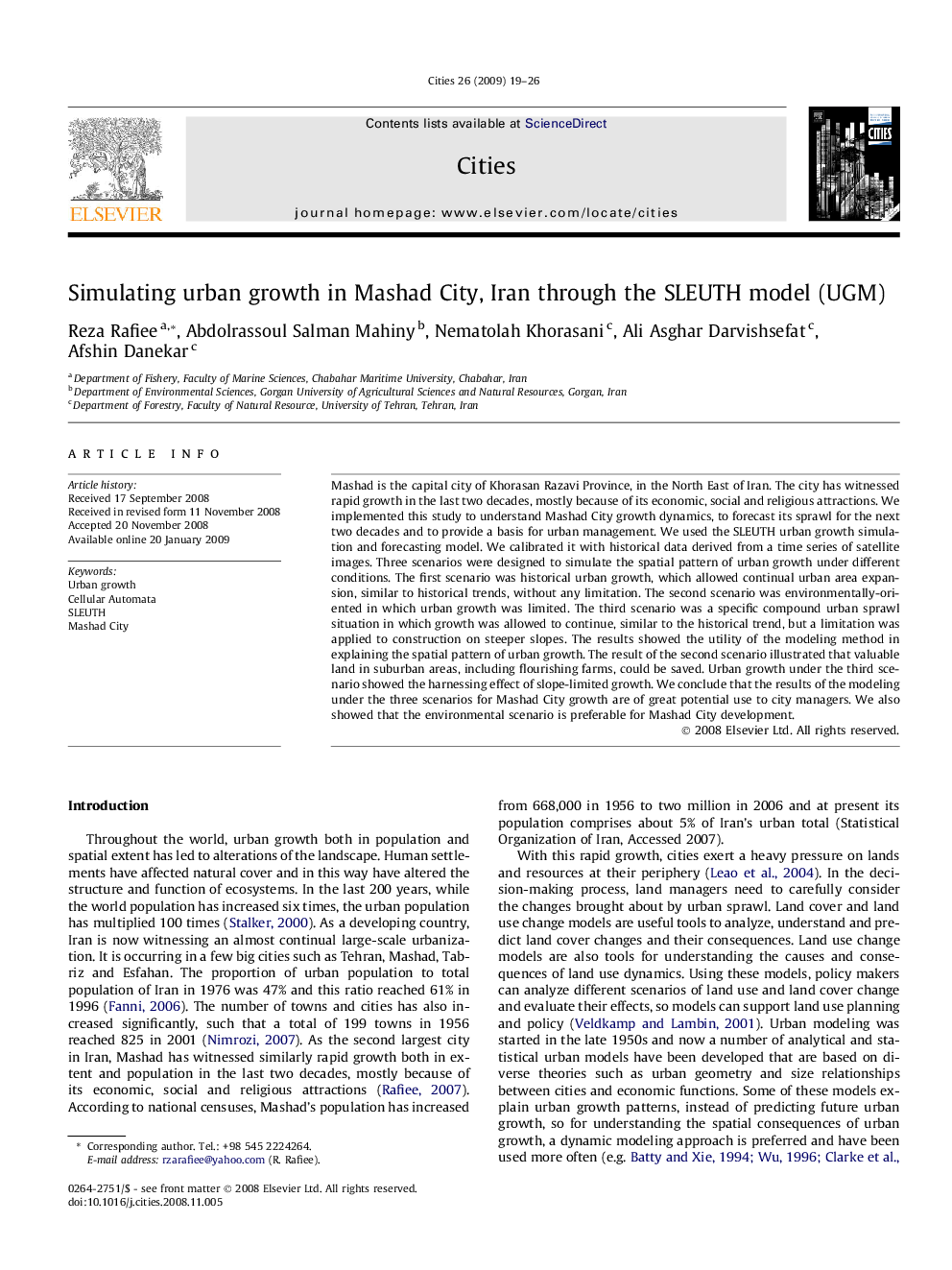| Article ID | Journal | Published Year | Pages | File Type |
|---|---|---|---|---|
| 1008880 | Cities | 2009 | 8 Pages |
Mashad is the capital city of Khorasan Razavi Province, in the North East of Iran. The city has witnessed rapid growth in the last two decades, mostly because of its economic, social and religious attractions. We implemented this study to understand Mashad City growth dynamics, to forecast its sprawl for the next two decades and to provide a basis for urban management. We used the SLEUTH urban growth simulation and forecasting model. We calibrated it with historical data derived from a time series of satellite images. Three scenarios were designed to simulate the spatial pattern of urban growth under different conditions. The first scenario was historical urban growth, which allowed continual urban area expansion, similar to historical trends, without any limitation. The second scenario was environmentally-oriented in which urban growth was limited. The third scenario was a specific compound urban sprawl situation in which growth was allowed to continue, similar to the historical trend, but a limitation was applied to construction on steeper slopes. The results showed the utility of the modeling method in explaining the spatial pattern of urban growth. The result of the second scenario illustrated that valuable land in suburban areas, including flourishing farms, could be saved. Urban growth under the third scenario showed the harnessing effect of slope-limited growth. We conclude that the results of the modeling under the three scenarios for Mashad City growth are of great potential use to city managers. We also showed that the environmental scenario is preferable for Mashad City development.
